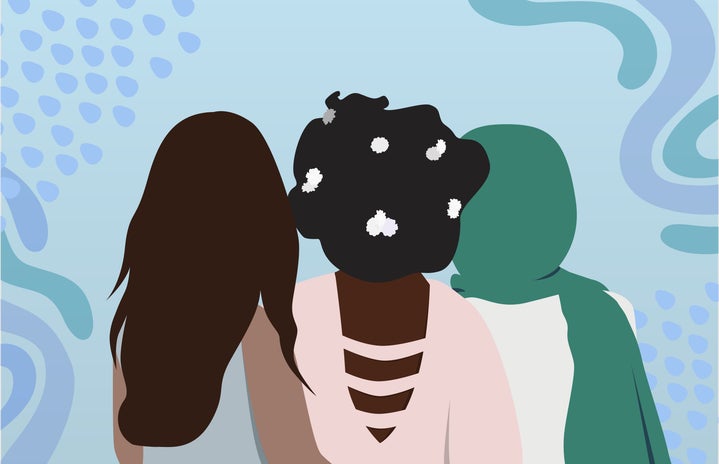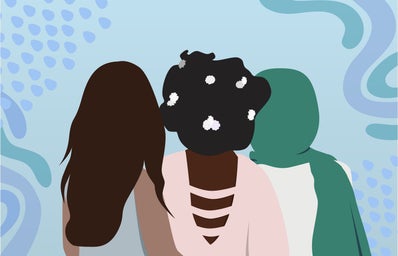In recent years, popular stories have taken steps to ensure a more balanced representation within their casts. Of course this is beneficial to women, people of color, and other marginalized groups who are being given the transparency of seeing themselves on screen and in pages for the first time. However, there are underlying trends within this phenomenon that have become problematic due to its tendency to limit women to two dimensional characters.
For example, the trend of writing villains (often half baked) redemption arcs is a cherished storyline in popular franchises such as Star Wars, the Marvel Cinematic Universe, and Harry Potter. But can you name a single female villain with enough complexity to be afforded this development? Compare Severus Snape, a fan favorite, with Bellatrix Lestrange. While Snape had “reasoning” behind his abuse of the students and was ultimately working to protect them behind closed doors, Bellatrix was never even gifted the autonomy of a backstory. Why did she join the death eaters? Was her family pressuring her? Did she ever try to rebel against the expectations of her family?
It is important to recognize that many male redemption arcs are equally detrimental, such as those of Severus Snape or Kylo Ren. Both of these narratives suggest that, had the women of the story chosen differently, they would not have committed the atrocities they must ultimately take responsibility for. Countless lives may have been saved if Leia had reached out to her son in adolescence or if Rey had helped him defect from the First Order earlier. Snape might not have become a death eater if Lily Evans had returned his feelings. But regardless of their dark pasts, these characters made their own choices, and through their undeveloped redemptions the narrative implies that these women are at fault for their wrongdoings.
Within the trend of sexist vindication, poor character writing is displayed through the implemented redemption arcs of male characters and the disparity seen when cross-analyzing feminine villains. It is visible when comparing Delores Umbridge (who was not even granted a decent motive beyond her cruelty) and Voldemort, Kylo Ren and Captain Phasma, Loki and Hela, and Jaime Lannister and Daenerys Targaryen. What were the motivations for these women’s actions? They all had the potential to become incredibly complex characters, complete with the same familial disputes and moral challenges of their male counterparts. But instead they were all categorized as insane, following the same trend as literature in decades past and creating a mirror image of the traditional problematic female character: the witch.
From the witches in Macbeth to various Grimm Fairy Tales such as Snow White and Hansel and Gretel, insane and evil women are portrayed with malevolent characteristics to categorize them as insane. By characterizing women as people to be defeated, particularly by the young male heroes present in many of these stories, the phenomenon reinforces patriarchal ideology, suggesting that women are unable to make their own decisions.
Particularly within American literature, this trend later advanced with The Wizard of Oz, The Chronicles of Narnia, and Arthur Miller’s The Crucible, which revolved around the Salem witch trials. From early on in colonial America, women were suppressed within society which mixed to religious fanaticism and extreme paranoia, sparking the fictional demonization of women. By casting immoral women as supernatural, the patriarchy effectively reduced disagreeable and independent women to monsters. In American based fairy tales, the White Witch and the Wicked Witch of the West became staples of despicable women who attempted to upend society.
Furthermore, the Wicked Witch of the West is evidence that ostracized women can be redeemed in the event of close analysis. In Wicked by Gregory Maguire, Elphaba (the witch) is redeemed through Maguire’s manipulation of the traditional tale. In the novel, Elphaba’s actions are a result of her attempts to defeat the true villain: the Wizard. Still, the townspeople buy into the patriarchal propaganda and celebrate her death. This storyline gained its momentum by defying the masculine demonization of women and reduction of female characters. The popularity and success of Wicked is proof that female readers are desperate for three dimensional representation.
Women such as Maleficent from the newest Disney adaptations and Harley Quinn from Birds of Prey are proving that dynamic feminine characters are deserving of complex redemption arcs, as well. Even in shows such as The Umbrella Academy, where Hazel is redeemed while Cha Cha remains a villain, the writers ensure the portrayal of fully developed women capable of both good and evil (such as Vanya, the Handler, and Allison). Overall, it is important to recognize the productivity of this balance within the media to avoid problematic patriarchal undertones.
As a society, we need to reject the notion that male villains can be redeemed easily through the love of a woman, preventing the implications that women have any duty to abusive men. We need to reject the idea that only male villains can be humanized, and acknowledge the insufficient motivations of their female counterparts. Not every situation is black and white, and pretending that women must choose a stance on their respective conflicts, while men are afforded the autonomy to play both sides, is counterproductive to gender equality.



